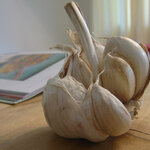Cancer Research

Scientists at Newcastle University have developed a cancer fighting technology which uses UV light to activate antibodies which very specifically attack tumours.
Therapeutic antibodies have long been recognised as having excellent potential but getting them to efficiently target tumour cells has proved to be very difficult.
Now, Professor Colin Self and Dr Stephen Thompson from Newcastle University have developed a procedure to cloak antibodies which can then be activated by UV-A light and so can be targeted to a specific area of the body just by shining a probe at the relevant part.
This…

When cells become cancerous, the sugars on their surfaces undergo distinct changes that set them apart from healthy cells. For decades, scientists have tried to exploit these differences by training the immune system to attack cancerous cells before they can spread and ravage the body.
Now, researchers at the University of Georgia Cancer Center have synthesized a carbohydrate-based vaccine that – in mice – has successfully triggered a strong immune response to cancer cells. The finding, published in the October issue of the journal Nature Chemical Biology, brings the scientists one step…

Smoking cigarettes is associated with an increased risk of cancers of the lung, head and neck, esophagus, bladder and many others and also affects response to anti-cancer treatments. But smoking does not result in more advanced stage diagnoses or aggressive breast cancers at the time of diagnosis. That is the result of an analysis of 35 years of data for more than 6,000 patients presented today at the American Society for Therapeutic Radiology and Oncology’s 49th Annual Meeting in Los Angeles.
“We hypothesized that tobacco use could result in more advanced stage or more aggressive breast…

More than 250 million women worldwide smoke tobacco. Compared to men, women have a greater risk of smoking-related diseases, and also have more difficulty quitting. A new study, the first of its kind, has found that cigarette smoking and having a family history of alcoholism have different effects on sweet-taste perception and food cravings.
“Tobacco is one of the most heavily used addictive drugs,” said M. Yanina Pepino, a researcher at the Monell Chemical Senses Center in Philadelphia and corresponding author for the study, “leading to an increased risk of lung and heart diseases and a…

Researchers at Tufts University School of Medicine in collaboration with the Virginia Bioinformatics Institute at Virginia Tech have created a computer program called Pathogen Simulation (PathSim) to study the progression of Epstein-Barr virus (EBV) in humans. David Thorley-Lawson, PhD, professor of pathology at Tufts University School of Medicine, is combining PathSim, laboratory methods, and clinical studies to provide a new and powerful approach to understanding EBV and ultimately designing anti-viral therapies.
“PathSim is an agent-based computer program. The agents are the virus itself…

From absorbable sutures to gel-like cold-and-flu capsules, polymers have been used for years in the human body to help heal what ails us.
Today, scientists are pioneering the development of new “polymer drugs”--long-chained molecules that have therapeutic benefits because of their chemical composition and high molecular weight. The potential benefits of these novel drugs range from the more precise targeting of cancer-fighting chemotherapy treatments, to the sequestering and removal of toxins in the body.
Kristi Kiick, associate professor of materials science and engineering at the University…

Retinoblastoma arises in the retina—the multi-layered, membrane lining the back of the eye that responds to light by generating nerve impulses that are carried into the brain by the optic nerve. Researchers have found that certain mutations enable specific cells in the retina to multiply and cause eye cancer, a finding that suggests deliberate genetic manipulations might coax an injured brain to repair itself
Investigators at St. Jude Children's Research Hospital have identified the cell that gives rise to the eye cancer retinoblastoma, disproving a long-standing principle of nerve growth…

Have you ever wondered why you inherited your mother’s smile but not your father’s height? Researchers at the Universities of Leeds and Dundee are one step closer to unravelling how nature combines both maternal and paternal DNA to create genetically unique offspring.
In a world first, Leeds researchers Professor Simon Phillips, Dr Stephen Carr and Dr Jonathan Hadden, together with Professor David Lilley at Dundee, have mapped the 3 dimensional structure of an enzyme responsible for splitting DNA strands – a process at the heart of human individuality.
The discovery of the T7 endonuclease 1…

Honey is enjoying new advocates as a wound-healing solution amid rising concerns about antibiotic resistance and a renewed interest in natural healing. Researchers started to document its success in the early 20th century but the introduction of antibiotics temporary halted its use.
A research review published in the October issue of IJCP concludes that surgeons should consider the supermarket as well as the medicine cabinet when it comes to effective wound healing.
They also recommend patients who’ve undergone surgery ask their doctors whether they should apply honey to their wounds to speed…

Any movie buff knows that garlic spooks vampires and thus keeps you from losing blood.
Less well known is that eating garlic may keep your blood pressure at safe levels also.
A new study from the University of Alabama at Birmingham (UAB) shows this protective effect is closely linked to how much hydrogen sulfide (H2S) is produced from garlic compounds interacting with red blood cells.
The UAB researchers found this interaction triggered red blood cells to release H2S, which then led to the relaxation of blood vessels. Fresh garlic was used at a concentration equal to eating two cloves.
The…